Jarman Award-nominated artist Imran Perretta talks about the roles of politics and autobiography in his work – and discusses his latest production, a two-channel film entitled the destructors, which is currently on view at Spike Island in Bristol.
The title of the film, the destructors [2019], is borrowed from a short story from 1954 by Graham Greene. What inspired this – and who are the ‘destructors’, in your interpretation?
‘The Destructors’ in Greene’s original are a group of boys who go about destroying an old man’s house from the inside out. I studied it at school when I was 13, and it has stuck with me ever since as it was also around this time in my life that the Twin Towers came down. What struck me was the parallelism between Greene’s narrative of misled youth around the time of the Blitz and the targeted media coverage of young brown people at the advent of the War on Terror.
The original story talks about these boys who are known solely for their capacity for violence and, around the time I first read it, my body was starting to be seen as a threat as it was attached to a very specific form of ideological violence – one that compounded pre-existing stereotypes about male-presenting people from South Asian backgrounds. Now, there was this spectre of fundamentalism haunting bodies like mine, a new essentialism that none of us recognised or had any proximity to previously.
The destructors in my film are a group of young South Asian men, all from Muslim backgrounds, all with varying levels of piety – some believe in a metaphysics, some don’t, some consider themselves culturally Muslim, others have a more traditional spiritual practice – but the energy that holds us is one of narrative; of mutual love, respect and solidarity, but also of being looked upon as a unique and dangerous threat to society.
Why did you choose to shoot the film in Tower Hamlets in London?
The film is situated in Tower Hamlets because I was living in the borough around the time of writing the script and developing the film. I’m from South London but I lived in East London for some time and – although there are several partner institutions that have commissioned the work – a lot of the conversations were happening in the same local area as the Chisenhale Gallery, one of the co-commissioning venues. The gallery is at the heart of a majority Bangladeshi Muslim population and that happens to be the demographic to which I belong (among others).
Tower Hamlets also has an increasingly large disparity between the wealthiest and the poorest in the borough and the effects of gentrification are very, very visible. So in one way or another the area has become synonymous, similarly to Hackney before it, with a mass displacement. Austerity, gentrification and the War on Terror – all of these forces have contributed to the social death and dislocation of a Bangladeshi community that has been the heart and soul of the local area for decades.
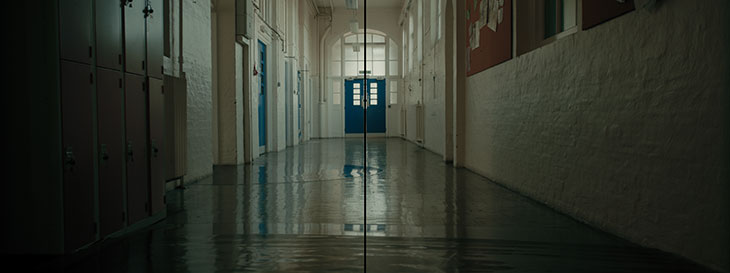
the destructors (still; 2019), Imran Perretta
Personal identity and autobiography play a large role in your work. What is it that motivates you to draw so much on your own experience?
In the destructors I am speaking from an embodied point of view, so I’m not trying to communicate anyone else’s experience other than my own. I think specificity in storytelling is often the best way of unearthing a broader truth and personal accounts of trauma are often, in some way, collectively felt.
In most of my work, I am speaking from a first-person point of view but this isn’t always the case. For example, in my last film, 15 days [2018], I co-wrote the script with the protagonist of the film, a former inhabitant of the Calais Jungle who is called 15 days, so we could work through global narratives of migration by ruminating on his intimate struggle within it.
Within the stories that make up the script for the destructors, there are issues that have affected all of the cast in one way or another, in particular the question of what it means to be rendered hypervisible by both the state and the public while trying to ‘find’ oneself among the wreckage of it all.
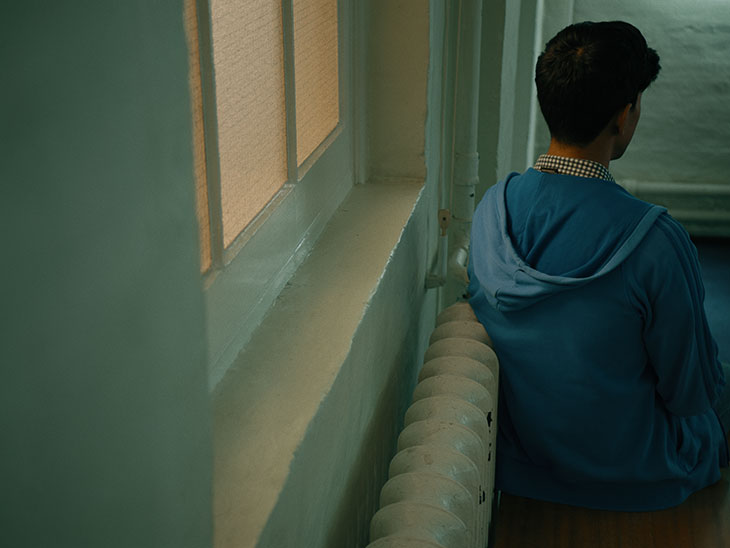
the destructors (still; 2019), Imran Perretta
What about the political impulse? Where does that come from?
My family has always been committed to social justice in one way or another – my mum was a child protection social worker and my dad was a union rep so I think it was embedded in my childhood. The Bangladeshi side of my family survived the Partition of India and the Italian side survived fascism and extreme poverty in the south of the country, so political narratives run deep.
Through all the twists and turns of growing up in a politically minded family, the moving image seems to have given me the best opportunity to continue to talk about issues of marginalisation. Having an experimental approach to political subject matter is what is intoxicating to me about art: making things that are already complex even more complex. That’s really the only thing that art does well.
Were there particular artists or film-makers who inspired you in your approach?
Not many of my references are part of the canon to be honest, and this is mainly because I didn’t grow up engaging at all with contemporary art. I think my family always felt very alienated by it.
My main references have always been music videos and, from an aesthetic point of view, the person that I was always most interested in was Hype Williams, a director who was particularly prolific from the mid ’90s through the mid 2000s. He’d do mad stuff like take a fish-eye lens and shove it right up to Missy Elliot’s face and use mixed frame rates and unconventional lighting. He was also at the forefront of using visual effects in music videos, something that was ordinarily the preserve of big-budget feature films at that time. That massively stimulated my interest in experimental visuals, I think. I always wanted to learn how to do it and try to do it myself. Music videos have this tight relationship between sound and visuals that I am always yearning for in my own work.
You mention visual effects, which you’ve used throughout your films alongside live action footage. Why did you start doing this?
Introducing something uncanny into the frame is like a jolt – you suspend your disbelief; it’s a moment of dissonance that is both bodily and cognitive. I always think of VFX in relation to magic realist literature, in which supernatural phenomena that are situated firmly in the real world become a way of talking about historical trauma.
I am interested in drawing on imagery associated with conflict, like plumes of smoke or dust, and simulating its effects without having to show the physical reality of the violence that precedes it. There’s also the tent in 15 Days, which has the tent as a proxy for the body. This is in part a reaction to the prevalence of images of black and brown death in the Western media. For me, VFX is one of many ways of creating an alternative visual language around conflict and suffering without showing the bodies of vulnerable people being breached.
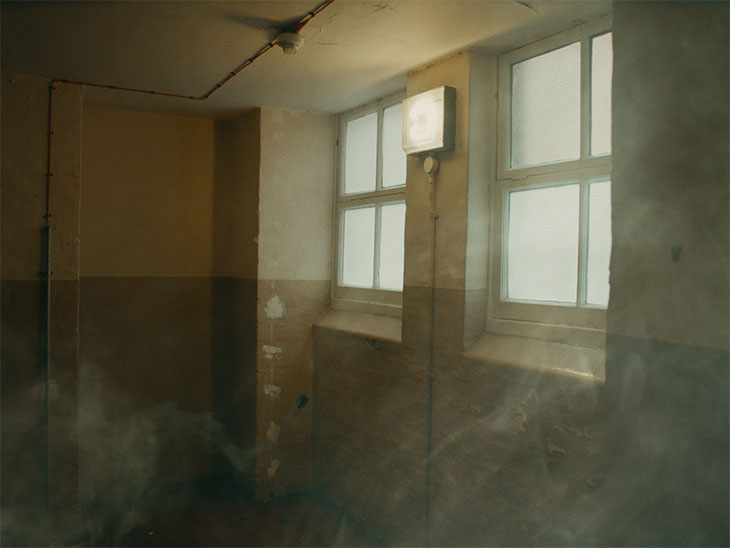
the destructors (still; 2019), Imran Perretta
So many artists of your generation use moving images. Why do you think this is the case?
One reason to consider is that studio space is very expensive, and the less stuff you have, the less space you need. So digital practices can still flourish without dedicated studio space, which is a huge deal.
Besides this, I personally started making films in earnest once video-enabled DSLR cameras were cheap enough to be able to buy second-hand, around the 2010s. This technology really kickstarted a wave of independent film and, as with most things, reached the art world pretty late. Before cheap HD cameras, 16mm film was the format of choice at art school, but the cost was always prohibitive for a lot of people.
The other big development was the advent of peer-to-peer sharing and the mass availability of pirated software once home internet was fast enough. As those technologies became democratised, albeit illegally, the floodgates opened. In the old days before Limewire, I’d have to get pre-cracked CD-Rs from Tooting Market but now you have cheap laptops with free editing and music software already installed.
Have you started thinking about your next project?
I am developing a film about about environmental racism in Bangladesh, as I’m interested in the ways in which the developing world is almost entirely absent from the conversation around environmentalism in the West. Bangladesh is the lowest-lying country in the world, and it will be the first to go under as sea levels rise. The landmass is already retreating, and every year, when the monsoon comes, more and more people die.
I spent a lot of time in the mangrove forests last time I was in Bangladesh, and it is a fascinating landscape. There was a big oil slick in 2015, when a tanker capsized and killed lots of plant life, freshwater dolphins and other endangered species. There’s also famously a small Bengal tiger population in that part of the world that is slowly dying off because of human intervention. So it’s really at the apex of the environmental apocalypse – it’s happening where I’m from, where my family’s from, so I feel that as a matter of urgency I need to be there and I need to say something about it. I need to force myself to look beyond the issues that are affecting borders closer to home to begin to think about my relationship to the country in which my mum was born. A country which, as we speak, is slowly slipping away beneath the sea.
‘Imran Perretta: the destructors’ is at Spike Island, Bristol, until 8 December. The film will tour to other venues across the UK in 2020.
Unlimited access from just $16 every 3 months
Subscribe to get unlimited and exclusive access to the top art stories, interviews and exhibition reviews.

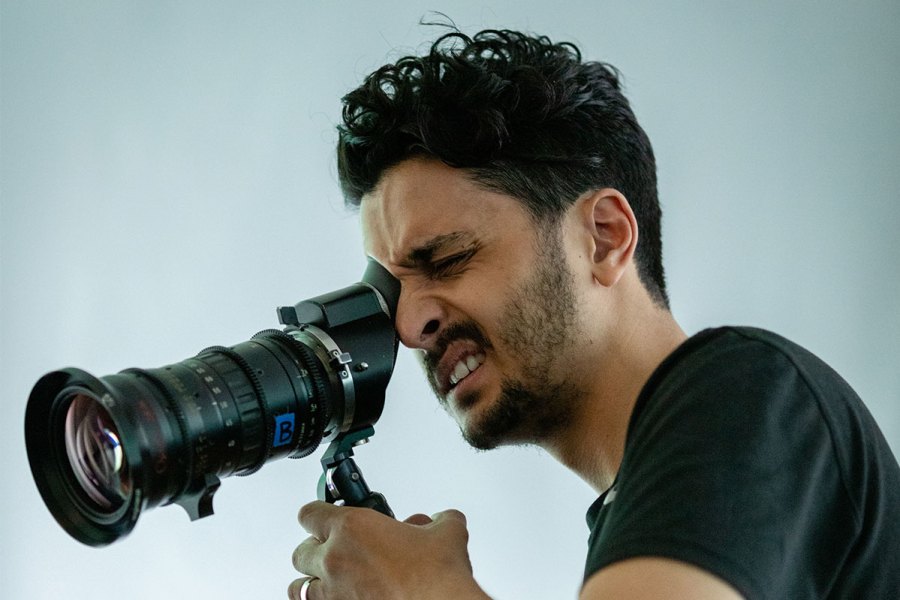
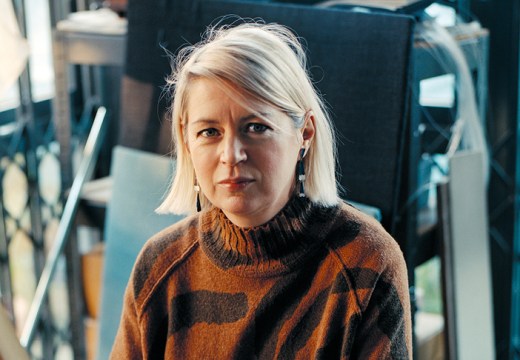
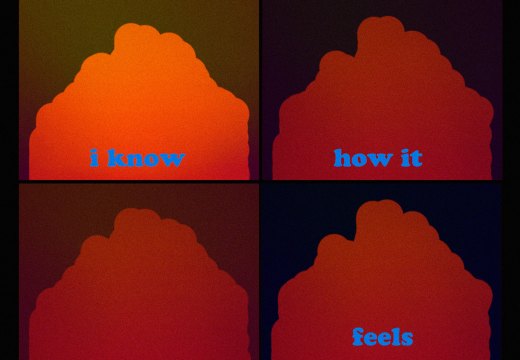










![Masterpiece [Re]discovery 2022. Photo: Ben Fisher Photography, courtesy of Masterpiece London](http://www.apollo-magazine.com/wp-content/uploads/2022/07/MPL2022_4263.jpg)
It’s time for the government of London to return to its rightful home